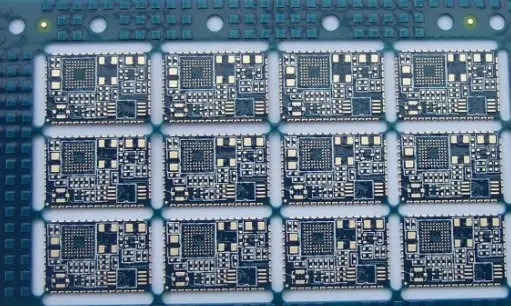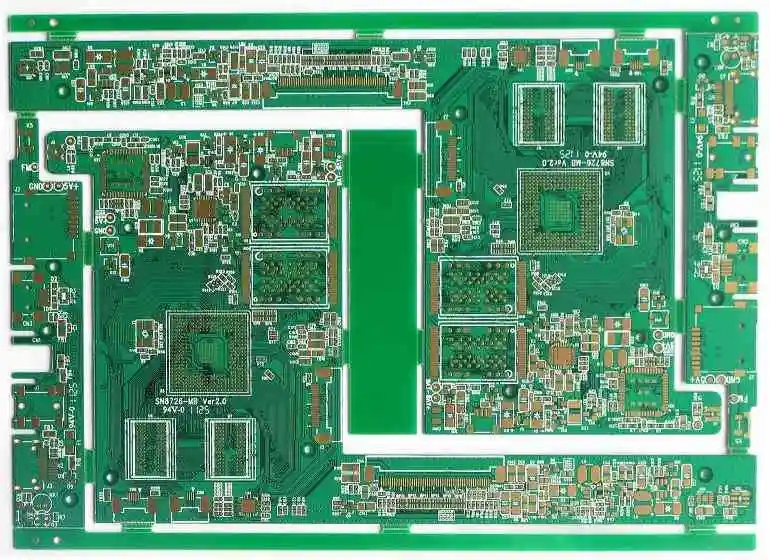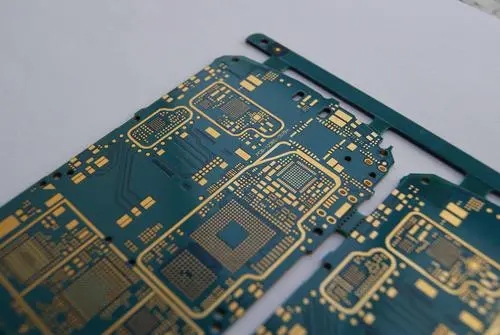
High frequency board laminated structure and wiring requirements
The circuit board manufacturer, circuit board designer and PCBA manufacturer explain the high frequency board lamination structure and wiring requirements
1、 High frequency plate laminated structure
In addition to the impedance of the RF signal line, the incense screen structure of the RF PCB high-frequency board also needs to consider heat dissipation, current, devices, MC, structure and skin effect. Generally, we follow the following basic principles in the layering and stacking of multilayer printed boards:
A) Each layer of RF PCB high frequency board has a large area of floor, and there is no power plane. The upper and lower adjacent layers of RF wiring layer should be ground planes. Even if it is a digital analog mixed board, the digital part can have a power plane, but the RR area still needs to meet the requirement that each floor has a large area of flooring.
B) For RF double-sided boards, the top layer is the signal layer and the bottom layer is the ground plane. The RF board has four layers. The top layer is the signal layer, the second and fourth layers are ground planes, and the third layer uses power and control lines. In special cases, some RF signal lines can be used on the third layer. More layers of RF boards, and so on.
C) For the dry RF backplane, the upper and lower surface layers are both ground. To reduce the impedance discontinuity caused by vias and connectors, the second, third, fourth and fifth layers use digital signals. The other stripline layers near the bottom are RF signal layers. Similarly, the adjacent two layers above and below the RF signal layer should be the ground, and each layer should be paved in a large area.
D) For high frequency boards with high power and high current, the RF main link should be placed on the top layer and connected with a wide microstrip line. This is conducive to heat dissipation, reducing energy loss and reducing wire corrosion error.
E) The power plane of the digital part shall be close to the grounding plane and arranged below the grounding plane. In this way, the capacitance between the two metal plates can be used as the smoothing capacitance of the power supply, and the grounding plane can also shield the radiated current distributed on the power supply plane. The specific stacking method and plane division requirements can refer to the 20050818 Printed Circuit Board Design Specification - EMC Requirements issued by EDA Design Department, and the latest online standards shall prevail.

2、 High frequency board wiring requirements
1. Corner
If the RF signal is routed to the effective line outside the corner, the impedance will increase and cause reflection. Therefore, the external treatment of the corner mainly includes two methods: corner cutting and fish tasting.
(1) Chamfer applies to small corners. As shown on the left, the applicable frequency of chamfering can reach 10GHz
(2) The radius of the arc angle should be large enough, generally speaking, to ensure that: R > 3W.
2. Microstrip wiring
The RF signal is applied to the top layer of the high frequency PCB board, and the plane layer below the RF signal must be a complete grounding plane to form a microstrip line structure. To ensure the structural integrity of the microstrip line, there are the following requirements
(1) The edges on both sides of the microstrip line shall be at least 3W wide from the edge of the ground plane below. In the range of 3W, there shall be no ungrounded via.
(2) The distance between the microstrip line and the shielding wall shall be more than 2W. (Note: W is the line width).
(3) The uncoupled microstrip lines in the same layer shall be treated with ground clad copper sheet and ground vias shall be added on the ground copper sheet. The distance between the holes shall be small and the distance between the holes shall be 20, and they shall be evenly arranged. The edge of ground copper foil shall be smooth and flat, and no sharp burrs are allowed. It is recommended that the edge of the ground clad copper sheet be 1.5W wide or 3H wide from the edge of the microstrip line. H represents the thickness of the microstrip substrate medium.
(4) RF signal routing is prohibited to cross the ground plane gap on the second floor.
3. Ribbon wiring
RF signals sometimes pass through the middle layer of the high frequency PCB board, usually from the third layer. The second and fourth layers must be complete grounding planes, that is, eccentric stripline structures. The structural integrity of the stripline shall be ensured. The following requirements shall be met:
(1) The edges on both sides of the stripline shall be at least 3W wide from the edge of the upper and lower ground planes, and there shall be no ungrounded through holes within the range of 3W.
(2) It is forbidden for the F strip line to span the ground plane gap of the upper and lower layers.
(3) The strip lines in the same layer shall be treated with ground covering copper sheet, and ground through holes shall be added on the ground copper sheet. The distance between holes shall be small and dry into 20, and the holes shall be evenly arranged. The edge of ground copper foil shall be smooth and flat, and no sharp burrs are allowed. It is recommended that the distance between the edge of the ground clad copper sheet and the edge of the stripline should be no less than 1.5W or 3H. H represents the total thickness of the dielectric layer below the stripline.
(4) If the stripline is to transmit high-power signals, in order to avoid 50 ohm line width being too thin, the copper sheet on the upper and lower reference planes of the stripline area should be hollowed out. The hollowing width is more than 5 times of the total dielectric thickness of the stripline. If the line width still cannot meet the requirements, the upper and lower adjacent second layer reference planes should be hollowed out. PCB manufacturers, PCB designers and PCBA manufacturers will explain the high frequency board stack structure and wiring requirements.









